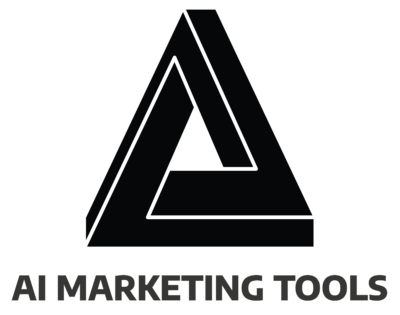
AI copywriting software is transforming content creation by enhancing efficiency and creativity in marketing. Unlike traditional writing tools that rely solely on human input, AI-driven solutions streamline workflows and optimize content generation. This article explores the key differences between AI and conventional writing tools, the various types available, and their impact on content quality. Readers will gain practical insights into selecting the right AI tools to refine their editing process and elevate their marketing strategies.
Key Takeaways
- AI copywriting tools enhance writing efficiency with features like smart automation and user behavior analysis.
- Different software types cater to various content needs, influencing target audiences and usability features.
- Pricing varies significantly among AI tools, with advanced options offering more robust functionalities.
- Effective user experience design boosts productivity and enhances the content creation process for marketers.
- Understanding legal and ethical considerations is essential for businesses using AI in copywriting.
How Does AI Copywriting Software Differ From Traditional Writing Tools?

AI copywriting software offers advanced features that distinguish it from traditional writing tools. By leveraging automation and AI-driven content generation, these tools enhance efficiency in digital marketing. Understanding the underlying technology behind these platforms reveals how they optimize content creation, while evaluating user experience highlights their role in streamlining workflows and improving productivity.
Key Features of AI Copywriting Software
AI copywriting software includes several innovative features designed to improve writing speed and effectiveness. These tools offer:
- Automated content generation for quick, on-brand messaging.
- Customization based on brand voice to maintain consistency.
- AI-driven content recommendations that align with audience preferences.
Understanding the Technology Behind AI Tools
AI-powered copywriting tools integrate advanced technologies to refine content creation. Many platforms leverage natural language processing (NLP) to enhance readability and ensure content aligns with SEO best practices. AI-driven keyword analysis helps improve visibility, while data-driven insights assist in tailoring messaging to target audiences effectively.
Evaluating User Experience and Interface Design
The usability of AI copywriting software significantly impacts its effectiveness. Well-designed platforms offer:
- Intuitive interfaces that simplify content generation.
- Personalization features for audience-specific messaging.
- Seamless integration with marketing tools like email automation and SEO software.
- Real-time optimization to enhance clarity and engagement.
Types of AI Copywriting Software

AI copywriting software comes in various forms, each tailored to different content creation needs. Some tools specialize in specific formats like landing pages or social media posts, while others offer broader functionality. Pricing and usability vary based on features and target audiences, making it essential to choose the right tool for efficient and effective content creation.
Specialized Tools for Different Content Formats
Different AI tools cater to specific content formats, helping businesses craft targeted and high-quality messaging. These tools leverage deep learning and natural language processing to optimize content for various platforms:
- Social media content generators for engaging posts and captions.
- AI-powered email marketing software for personalized campaigns.
- Landing page creators designed to improve conversion rates.
- Blog and article writing assistants for long-form content.
Cost Differences Among AI Copywriting Solutions
AI copywriting tools vary in price based on their capabilities. Some offer basic text generation for simple tasks like crafting headlines, while more advanced platforms use machine learning to enhance content marketing strategies. Businesses should consider their budget and content needs, as premium options typically provide advanced customization, optimization, and automation features.
Target Audience and Usability
The usability of AI copywriting software depends on its target audience and intended application. Businesses in social media marketing benefit from tools designed for rapid content generation, while eCommerce brands may use AI for automated messaging and customer engagement.
Comparing Popular AI Copywriting Tools

AI copywriting tools offer various features, pricing models, and user experiences. This section compares some of the most widely used platforms, highlighting their strengths and differences. The comparison covers:
- Grammarly vs. Jasper – Key features and functionalities
- Copy.ai vs. Writesonic – Pricing and performance metrics
- ContentBot vs. Rytr – Unique selling points
Each comparison provides practical insights to help users choose the right tool for their content creation needs.
Grammarly vs. Jasper: Feature Comparison
Grammarly and Jasper serve different purposes in content creation. Grammarly specializes in grammar checking and real-time writing assistance, making it ideal for proofreading and enhancing writing accuracy. Jasper, on the other hand, uses a powerful AI language model to generate long-form content, making it a valuable tool for marketers and businesses that need scalable content production. Key Differences:
- Grammarly focuses on refining writing quality through grammar and style corrections.
- Jasper generates AI-driven content across multiple formats.
- Jasper has a steeper learning curve but offers more creative flexibility.
- Grammarly is primarily an editing tool, while Jasper is a content creation tool.
Copy.ai vs. Writesonic: Pricing and Performance
Copy.ai and Writesonic both cater to businesses looking for AI-powered content generation, but they differ in affordability and features. Copy.ai is known for its budget-friendly plans and ease of use, making it suitable for small businesses and entrepreneurs. Writesonic offers more advanced customization options, catering to users who require greater control over tone, style, and formatting.
Comparison Highlights:
- Copy.ai is cost-effective, ideal for quick and simple content generation.
- Writesonic provides more flexible tone and style options.
- Both tools streamline content creation but differ in pricing and customization depth.
ContentBot vs. Rytr: Unique Selling Points
ContentBot and Rytr offer distinct benefits based on user needs. ContentBot specializes in readability and natural language processing (NLP), making it a strong choice for newsletters and web content. Rytr, on the other hand, focuses on understanding user intent, ensuring AI-generated copy aligns with specific tones and messaging goals. Key Strengths:
- ContentBot enhances readability and clarity.
- Rytr tailors content based on user intent for better engagement.
- Both tools help users craft compelling copy but excel in different aspects of AI-assisted writing.
Choosing the Right AI Copywriting Tool
Selecting the best AI copywriting tool depends on content goals, budget, and usability preferences. Businesses should assess whether they need a tool for editing and refinement (Grammarly), AI-driven content generation (Jasper), affordability (Copy.ai), customization (Writesonic), readability (ContentBot), or user intent alignment (Rytr) before making a decision.
Evaluating the Quality of AI-Generated Copy

Assessing the quality of AI-generated copy involves analyzing key factors such as clarity, coherence, engagement, and relevance to the target audience. While AI tools streamline content creation, their effectiveness depends on how well they align with marketing goals and user expectations. By examining key performance metrics, user feedback, and real-world applications, businesses can determine the value of AI-generated content in their marketing strategies.
Key Metrics for Assessing AI Copy Quality
AI copywriting tools are evaluated based on several critical metrics that impact their effectiveness:
- Clarity & readability – Ensuring the content is well-structured and easy to understand.
- Engagement levels – Measuring how AI-generated content performs across various platforms, such as social media and email marketing.
- Relevance to the target audience – Determining if the AI’s suggestions align with user intent and brand messaging.
- Real-time editing features – Tools like browser extensions allow for instant refinements to enhance quality and consistency.
User Feedback and Real-World Performance
User experiences play a vital role in evaluating how well AI tools integrate into content workflows. Many businesses report increased efficiency in tasks like affiliate marketing, email campaigns, and social media content creation, where AI assists in generating timely, relevant messaging.
Key insights from real-world applications include:
- Seamless integration into existing content workflows.
- Boosted productivity for teams relying on AI-generated drafts.
- Improved content effectiveness in digital marketing campaigns.
The Impact of AI Copywriting Tools on Marketing Strategies

AI copywriting tools have revolutionized marketing by enhancing efficiency, creativity, and performance measurement. These tools enable businesses to produce high-quality content faster, generate fresh ideas, and assess their impact through key performance indicators. By integrating AI into content strategies, marketers can optimize workflows, improve engagement, and maximize return on investment (ROI).
Boosting Time Efficiency in Content Creation
One of the primary advantages of AI copywriting tools is their ability to accelerate content production without compromising quality. By leveraging natural language generation (NLG), AI tools help marketers create compelling copy for advertising campaigns, social media posts, and email marketing in a fraction of the time. This allows businesses to:
- Meet tight deadlines while maintaining content consistency.
- Automate repetitive tasks, freeing up time for strategy and creativity.
- Optimize marketing efforts by focusing on audience engagement rather than manual writing.
Enhancing Creativity and Idea Generation
AI-powered tools don’t just speed up writing—they also fuel creativity by providing data-driven insights into trending topics and audience preferences. These tools help businesses:
- Identify relevant content angles based on real-time industry trends.
- Brainstorm engaging content ideas for blogs, social media, and marketing materials.
- Adapt content strategies with AI-generated suggestions tailored to different audience segments.
Measuring ROI from AI Copywriting Tools
To gauge the effectiveness of AI-powered content creation, businesses must track key performance metrics such as:
- Engagement rates – How well the content resonates with the audience.
- Conversion rates – The impact of AI-generated copy on lead generation and sales.
- Content performance – The effectiveness of AI-driven content across various platforms.
For example, businesses using AI-generated content in social media campaigns often see improved user interaction, demonstrating a direct return on their investment. By analyzing these metrics, companies can refine their content strategies and ensure they make the most of AI-driven copywriting solutions.
Common Misconceptions About AI Copywriting Software

Understanding the realities of AI copywriting software is crucial for businesses looking to integrate it into their marketing strategies. This section debunks common myths, clarifies the differences between AI and human writing, and highlights key legal and ethical considerations. By addressing these concerns, businesses can make informed decisions about using AI tools effectively.
Debunking Myths About AI Copywriting
Several misconceptions exist about AI copywriting software, often leading to unrealistic expectations or hesitancy in adoption. Some assume that AI can completely replace human writers, disregarding the creativity, emotional intelligence, and brand voice that people bring to content. Others worry about quality control, but modern AI advancements have significantly improved readability, engagement, and contextual accuracy.
Key Takeaways:
- AI enhances productivity but does not replace human creativity.
- AI-generated content quality has improved with better algorithms.
- Understanding AI’s role helps businesses leverage it effectively.
AI vs. Human Writing: Understanding the Differences
While AI tools streamline content creation, they lack the emotional depth, personal insight, and nuanced storytelling that human writers provide. AI excels at speed and efficiency but may struggle with subjective topics, humor, and maintaining a brand’s unique tone.
Comparing Strengths:
- AI: Best for rapid content generation, structuring, and data-driven writing.
- Human Writers: Essential for creativity, brand storytelling, and complex subject matter.
- Balance is key: Combining AI efficiency with human refinement produces the best results.
Legal and Ethical Considerations in AI Copywriting
Businesses using AI-generated content must be mindful of copyright laws, data privacy, and plagiarism concerns to maintain ethical standards. Ensuring AI-generated content is original and does not violate intellectual property rights is essential for avoiding legal risks.
Best Practices for Ethical AI Use:
- Verify copyright compliance for AI-generated text.
- Protect sensitive data when inputting proprietary information.
- Use plagiarism detection tools to ensure originality.
Conclusion
AI copywriting software is a powerful tool that enhances efficiency, supports creativity, and streamlines content production. However, it works best when combined with human oversight to maintain quality, authenticity, and ethical integrity. By understanding AI’s strengths and limitations, businesses can leverage it strategically to optimize marketing efforts and drive better results.

Comments